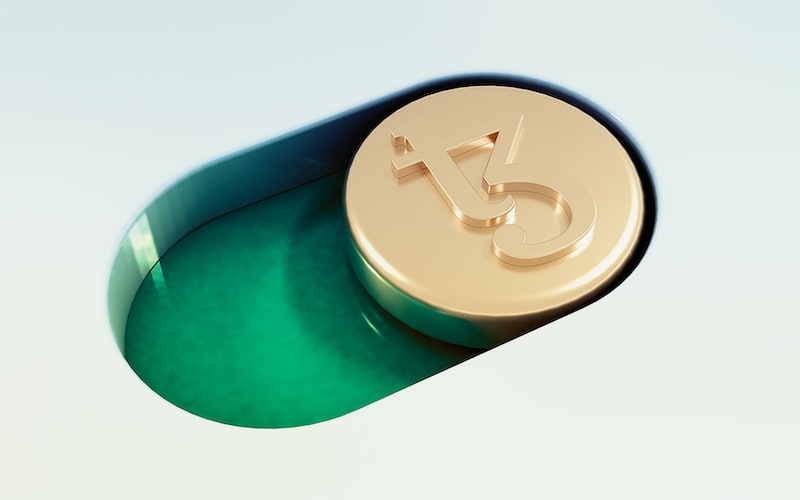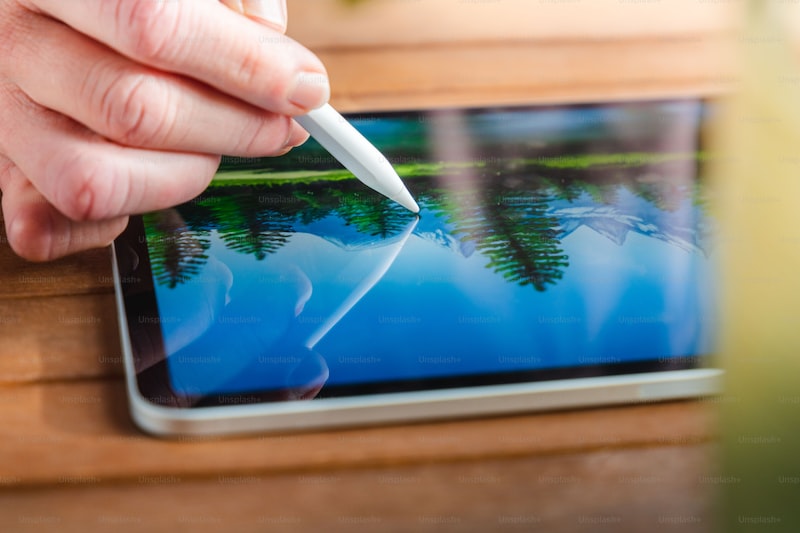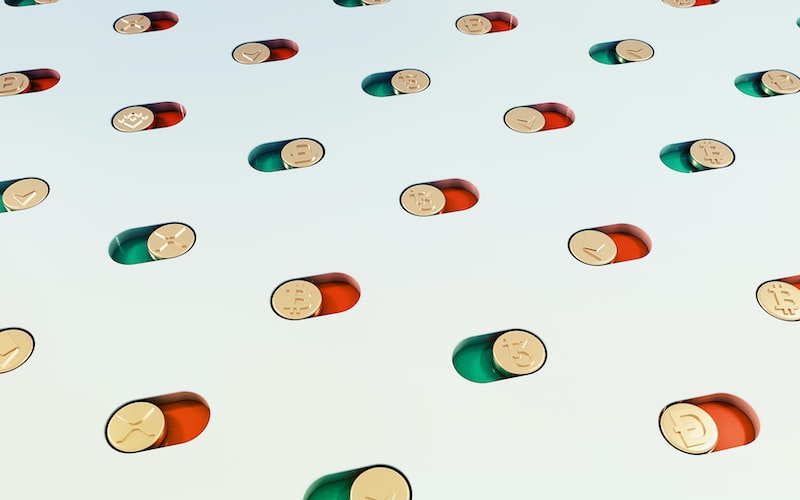Table of Contents
Are you an artist looking to explore the world of NFTs (non-fungible tokens) and sell your artwork in the digital realm? Artistic entrepreneurship has taken a new turn with the rise of NFT art, allowing artists to showcase their creations on blockchain platforms and monetize their talent like never before. In this article, we will guide you step by step through the process of selling NFT art.
Firstly, let’s understand what NFTs are. NFTs are unique digital assets that represent ownership or proof of authenticity of a particular piece of artwork. Unlike traditional art, which can be replicated or copied easily, NFTs provide a way to establish scarcity and ownership in the digital space.
To begin your journey as an artistic entrepreneur selling NFT art, the first step is to create your artwork. Let your creativity flow and produce a captivating and original piece that reflects your style and vision. Remember, uniqueness is key in the NFT world.
Once you have your artwork ready, you will need to choose a blockchain platform to mint your NFT. Ethereum-based platforms like OpenSea and Rarible are popular choices. These platforms allow you to upload your artwork, add relevant details such as title, description, and set a price for your NFT.
When it comes to setting the price for your NFT art, consider factors such as the quality of your work, your reputation as an artist, and market demand. It’s essential to strike a balance between making your art accessible and valuing your talent appropriately.
After minting your NFT art, it’s time to promote your creation. Utilize social media platforms, art communities, and online galleries to showcase your artwork and generate interest. Engage with potential buyers, share behind-the-scenes stories, and create a buzz around your NFT art.
Finally, when a buyer shows interest in purchasing your NFT art, negotiate and finalize the transaction. The buyer will typically pay in cryptocurrency, so ensure you have a digital wallet to receive the funds.
artistic entrepreneurship has taken a digital twist with NFT art. By following these steps – creating captivating artwork, minting on a blockchain platform, promoting your art, and finalizing transactions – you can embark on your journey as an NFT artist and monetize your talent in the exciting world of digital art. Embrace this new era of creativity and explore the endless possibilities of selling NFT art.
From Digital Canvas to Digital Gold: Exploring the Lucrative World of NFT Art Sales
In the bustling realm
of digital art, a revolutionary concept has taken center stage: Non-Fungible Tokens (NFTs). These unique tokens have transformed the way artists create, sell, and own their work. From a mere digital canvas, art has evolved into a realm of digital gold, with NFT art sales reaching astonishing heights. Let’s delve into this captivating world and explore the lucrative opportunities it offers.Imagine owning a masterpiece that cannot be replicated or forged, existing solely in the digital realm. That’s precisely what NFTs enable artists to achieve. By tokenizing their creations on blockchain networks like Ethereum, artists can establish indisputable ownership and authenticity for their digital artworks. This groundbreaking innovation has opened up a whole new marketplace for artists to showcase and monetize their talent.
What makes NFT art sales so alluring is the potential for astounding profits. Unlike physical art, which may require galleries and intermediaries to facilitate sales, NFT art can be bought and sold directly on various online platforms. This direct connection between artists and buyers eliminates unnecessary fees and middlemen, allowing artists to retain a larger portion of the revenue generated from their sales.
But how do NFTs derive their value? It lies in the concept of scarcity and exclusivity. Each NFT represents a one-of-a-kind piece of artwork, often accompanied by limited edition prints or additional perks. The rarity and uniqueness of these digital collectibles make them highly sought after by art enthusiasts and collectors alike. As demand surges, prices skyrocket, sometimes reaching jaw-dropping figures that leave traditional art markets astounded.
The allure of NFT art sales extends beyond the financial aspect. These digital assets have the potential to reshape the relationship between artists and their audience. By leveraging blockchain technology, NFTs enable artists to directly engage with their fans, fostering a sense of community and ownership. Furthermore, NFT art opens doors for collaborations and partnerships, allowing artists to explore new creative avenues and expand their horizons.
In this digital age, the world of art has transcended physical boundaries, embracing the boundless possibilities offered by NFTs. From a digital canvas to digital gold, NFT art sales have disrupted traditional art markets and empowered artists like never before. As we venture into this lucrative realm, one thing is certain: the future of art has been forever changed.
Unleashing Creative Capital: How Artists Are Profiting from NFT Artistic Entrepreneurship
Are you an artist looking to break free from traditional art markets and explore new opportunities? Look no further than the world of NFTs! In recent years, Non-Fungible Tokens (NFTs) have taken the art world by storm, revolutionizing how artists create, sell, and profit from their work.
So, what exactly are NFTs? Simply put, they are unique digital assets that represent ownership or proof of authenticity of a particular piece of art. Unlike cryptocurrencies such as Bitcoin, which are fungible and can be exchanged on a one-to-one basis, NFTs are indivisible and cannot be replicated. This uniqueness has captured the attention of both artists and collectors alike, creating a whole new market for artistic entrepreneurship.
One of the main advantages of NFTs is that they provide artists with direct access to a global audience, breaking down geographical barriers and enabling them to reach art enthusiasts across the world. Through online platforms and marketplaces dedicated to NFT art, artists can showcase and sell their creations directly to collectors, eliminating the need for intermediaries like galleries or auction houses. This newfound autonomy gives artists greater control over their work and allows them to keep a larger share of the profits.
Moreover, NFTs offer artists the opportunity to monetize their artistic skills in innovative ways. In addition to selling individual pieces, artists can also create limited editions, unlockable content, or even interactive experiences tied to their NFTs. This adds value to their artwork and provides collectors with unique and engaging experiences beyond the physical realm. The ability to release multiple editions or add layers of interactivity creates a sense of scarcity and exclusivity, further fueling demand and potential profits.
But it’s not just established artists who are benefiting from NFT artistic entrepreneurship. Emerging artists, who may have struggled to gain recognition in traditional art markets, now have a chance to shine in the digital realm. NFTs have leveled the playing field, allowing artists to gain visibility based on the quality and uniqueness of their work, rather than relying solely on established connections or gallery representation.
NFT artistic entrepreneurship has unleashed a wave of creative capital, empowering artists to explore new avenues for exposure and financial success. Through NFTs, artists can connect directly with a global audience, monetize their skills in innovative ways, and create unique experiences for collectors. Whether you’re an established artist looking to diversify your revenue streams or an emerging talent seeking recognition, NFTs offer an exciting opportunity to unleash your creative potential. So, why wait? Dive into the world of NFTs and unlock the endless possibilities that await!
Cryptocurrency Meets Creativity: The Rise of NFTs as a New Revenue Stream for Artists

Are you an artist who’s constantly seeking new ways to monetize your creative endeavors? Look no further, because the world of cryptocurrency has collided with creativity, giving rise to an innovative concept known as Non-Fungible Tokens (NFTs). These digital assets have taken the art world by storm and are transforming the way artists can earn revenue from their work.
So, what exactly are NFTs? Unlike cryptocurrencies such as Bitcoin or Ethereum, which are fungible and can be exchanged on a one-to-one basis, NFTs are unique and indivisible. They are built on blockchain technology, which ensures their authenticity and scarcity. Each NFT contains distinctive information that sets it apart from any other token, making it one-of-a-kind and truly special.

For artists, NFTs offer a revolutionary opportunity to showcase and sell their work directly to collectors and enthusiasts around the globe. By minting their creations as NFTs, artists can establish ownership rights and even receive royalties whenever their artwork is sold or traded in the future. This opens up a whole new realm of possibilities, empowering artists to potentially earn ongoing income from their creations.
The beauty of NFTs lies in the fact that they can represent various forms of art – from digital paintings and illustrations to music, videos, and even virtual real estate. This versatility allows artists from different backgrounds to explore this emerging market and find their niche. No longer constrained by traditional galleries or intermediaries, artists can now reach a worldwide audience and connect directly with their fans.
But why have NFTs gained so much popularity? Beyond the financial aspect, NFTs tap into our innate desire for ownership and exclusivity. Owning a digital asset that cannot be easily replicated or counterfeit holds a unique appeal. It’s like owning an original masterpiece that represents a piece of history, only in a digital form. NFTs also provide a transparent and decentralized marketplace, ensuring that artists receive fair compensation for their work.
the rise of NFTs has opened up exciting opportunities for artists to monetize their creativity in ways never seen before. With NFTs, artists can create, showcase, and sell their unique pieces directly to a global audience, bypassing traditional gatekeepers. This fusion of cryptocurrency and creativity has unleashed a new era where artists can explore uncharted territories and redefine how they earn a living from their passion. So, if you’re an artist looking to unlock a new revenue stream, consider diving into the world of NFTs – where imagination meets blockchain technology.
Inside the Minds of Artistic Entrepreneurs: How NFT Art is Revolutionizing the Art Market
Have you ever wondered what goes on in the minds of artistic entrepreneurs? These trailblazers are not just creators; they are visionaries who revolutionize industries. One such industry that is currently experiencing a seismic shift is the art market, thanks to the advent of Non-Fungible Tokens (NFTs). In this article, we will delve into the fascinating world of NFT art and explore how it is reshaping the art market as we know it.
NFTs, short for Non-Fungible Tokens, have taken the art world by storm. But what exactly are they? Think of NFTs as unique digital certificates of authenticity, stored on a blockchain. Each NFT represents a specific piece of art or collectible, be it a painting, photograph, video, or even a tweet. What sets NFTs apart from traditional art is their immutable nature, scarcity, and verifiable proof of ownership.

For artistic entrepreneurs, NFTs offer a plethora of opportunities. Firstly, NFTs enable artists to directly connect with their audience without intermediaries like galleries or auction houses. This direct-to-consumer approach empowers artists to retain greater control over their work and earn higher royalties from sales. Moreover, NFTs provide artists with a new revenue stream through royalties on secondary market transactions, ensuring ongoing financial benefits even after the initial sale.

Additionally, the decentralized and transparent nature of blockchain technology fosters trust between artists and collectors. By leveraging blockchain, artists can authenticate their creations, guarantee provenance, and protect against counterfeiting, thus enhancing the value of their artwork. Furthermore, NFTs enable artists to experiment with new ways of engaging with their audience, such as interactive and immersive experiences, unlocking a whole new dimension of creative expression.
The impact of NFT art on the broader art market cannot be overstated. It challenges traditional notions of ownership, blurs the boundaries between physical and digital art, and democratizes access to art. With NFTs, artists from diverse backgrounds can showcase their work and gain recognition on a global scale, irrespective of their geographical location or establishment within the traditional art hierarchy.
NFT art is a game-changer for artistic entrepreneurs and the art market at large. It empowers artists, enhances authenticity, and paves the way for new creative possibilities. As this technology continues to evolve and gain mainstream adoption, we can expect even more astonishing developments in the world of artistic entrepreneurship. The future is bright, and the minds of these trailblazers will continue to shape the art industry in ways we never thought possible.





